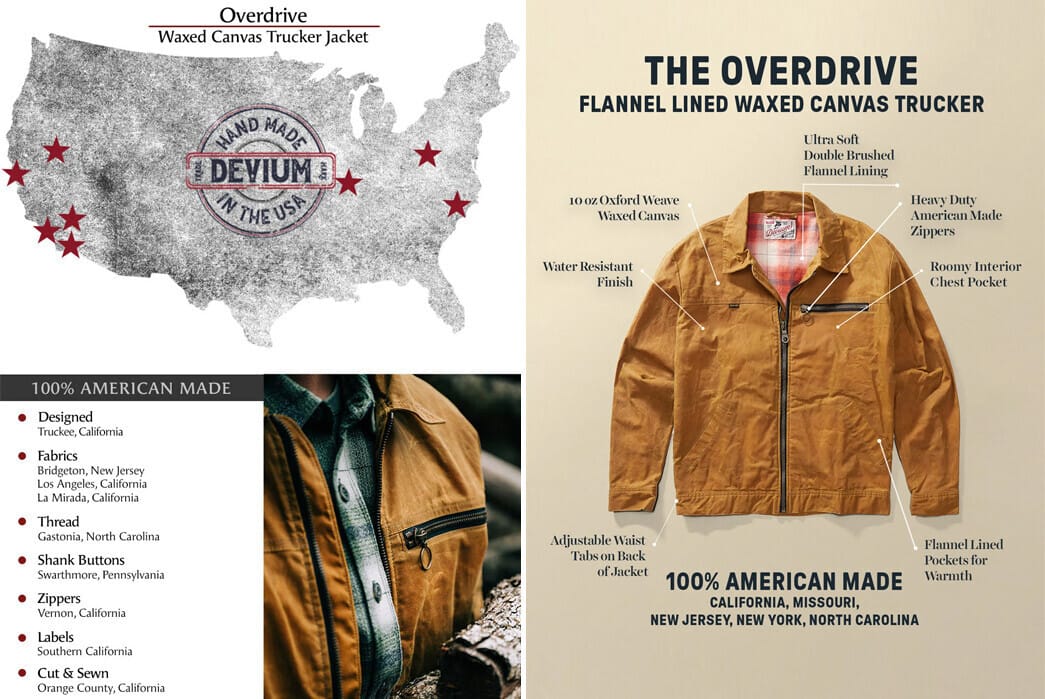- Heddels
- Posts
- June 2- Timex History - Devium
June 2- Timex History - Devium
Together With
Cheap Tick: The History of Timex Watches
We take a look at the key moments from the story of Timex, an American watchmaker known for making radically affordable timepieces.
Albert Muzquiz

Timex is undoubtedly one of the best-known watchmakers of our time and certainly the most famous watch brand based right here in the United States. The history of Timex isn’t a linear affair, it’s a hard-scrabble tale of survival in corporate America. Timex hasn’t defined the way we see watches or tell time, but rather morphed to stay ahead of public interest and in so doing, introduced many a nascent watch fan to the wide world of horology.
The Origins of a Watchmaker
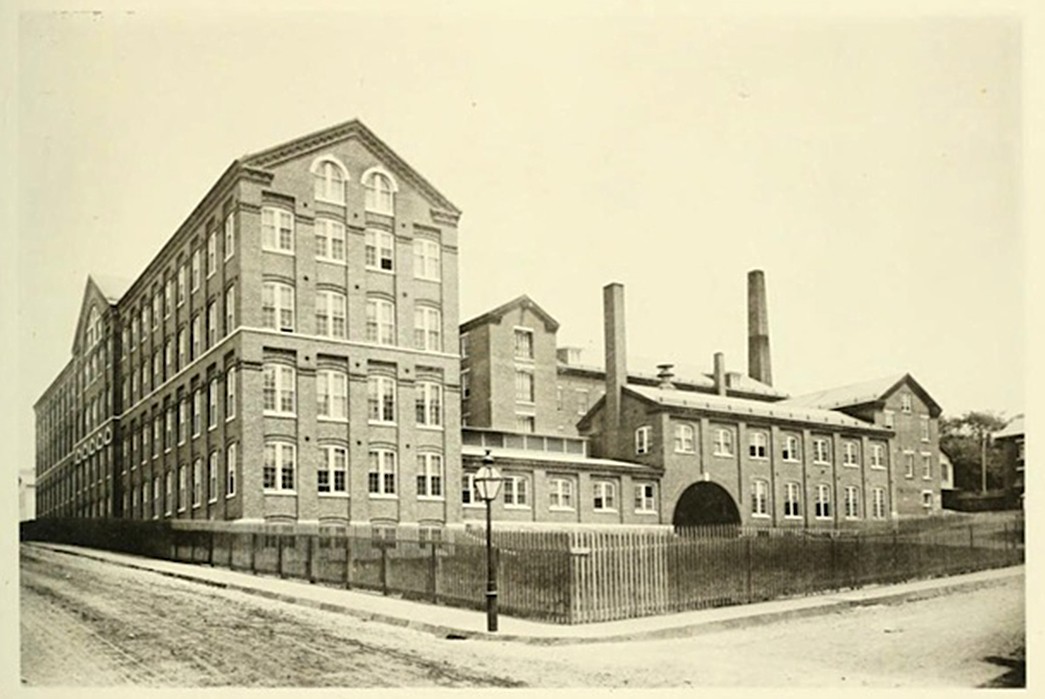
Waterbury Clock Company. Image via Worn and Wound.
Timex can trace its roots (in a complicated and roundabout way) to the Waterbury Clock Company, which was in turn founded by a Connecticut brass manufacturer called Benedict and Burnham. The Clock Co. was founded in 1854 and along with many other watch companies in the same river valley, manufactured lower-priced watches that could compete with the high-end European models of the era.
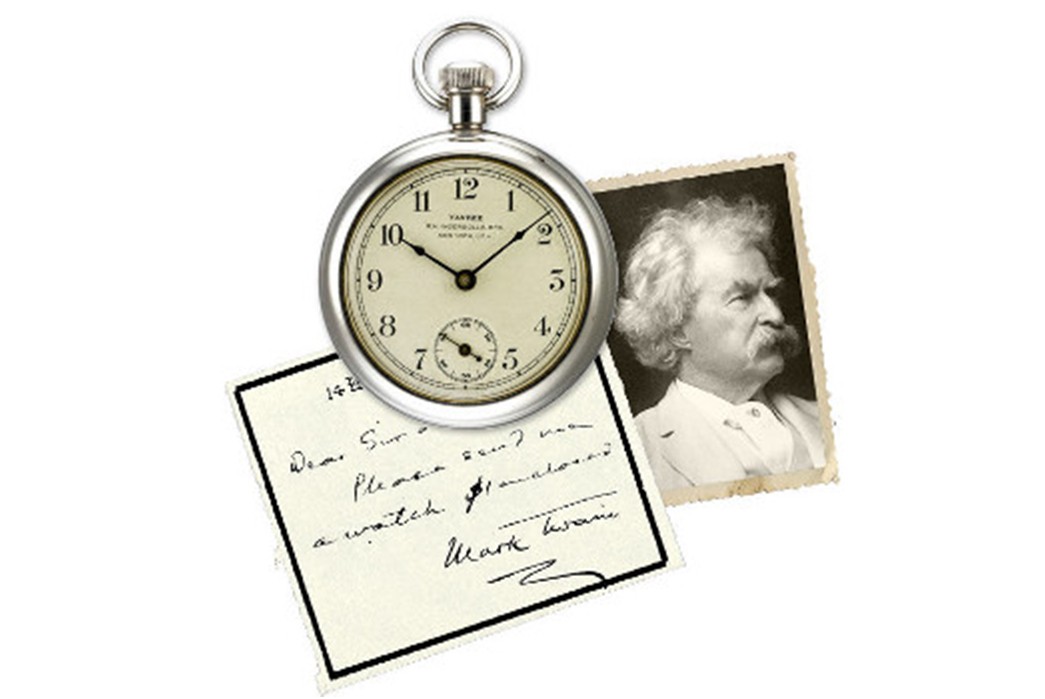
Ingersoll Yankee. Image via Timex.
An early victory came with the partnership with Ingersoll Watch Company, a team effort that began after Robert Ingersoll and his brother noticed the immense success of WCC’s first big hit, the pocket watch known as “Jumbo.” The fruitful partnership came to a head in 1896 with the release of the Ingersoll Yankee, a pocket watch that broke ground for its sheer affordability: these babies cost a single dollar! Sure, a dollar had quite a different value back in those days, but Timex, under the Ingersoll name established itself as the super-budget option for folks in need of a watch. Some folks even said that this was “the watch that made the dollar famous.”
WCC’s teamwork with Ingersoll was a huge success, but they were about to get too big for their britches. Back in Waterbury, Benedict and Burnham had introduced a new prototype for a watch with cheap, brass pieces and were soon selling these little pocket watches like crazy, but all was not well. Poor salesmanship and overall mismanagement caused Waterbury Watch to fall into bankruptcy.
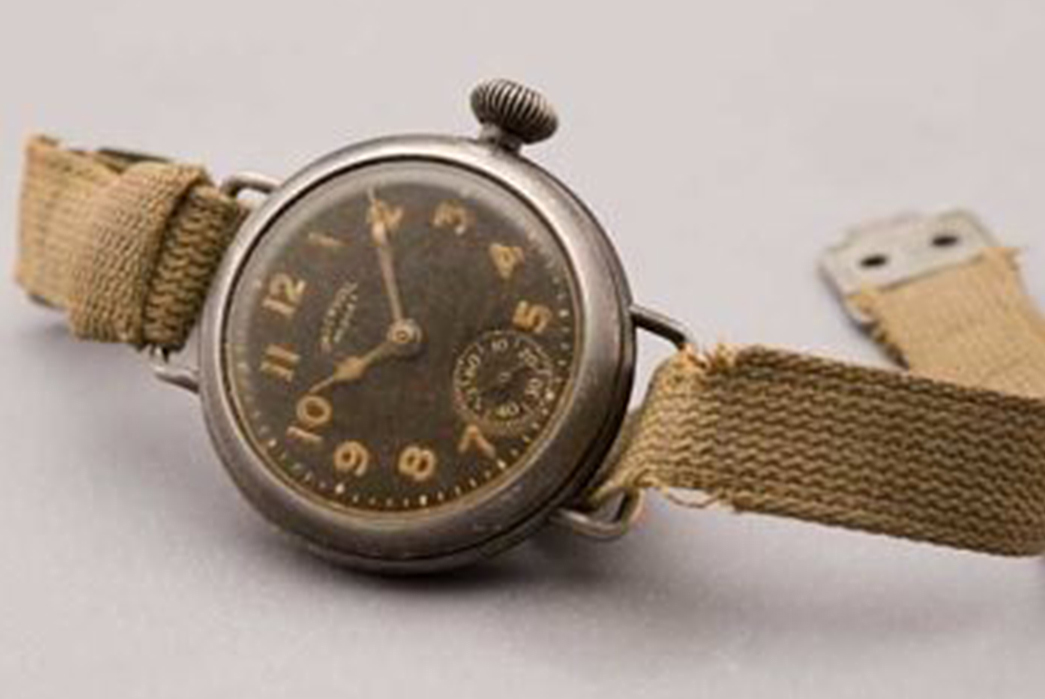
Timex Wrist Watch. Image via Bespokeunit.
If not for Ingersoll, who Waterbury supplied, the Timex story could have ended here, but the “war to end all wars” broke out in 1914 and wristwatches suddenly appeared on the scene. Up until the early 1900s, wristwatches had been thought of as jewelry and therefore, thoroughly unmasculine. But in war, men didn’t have the time to dig a pocket watch out of their coats when they needed the time. The obvious choice was to throw the watch on the wearer’s wrist and Waterbury was one of the first companies to release a wristwatch.
They modified “The Midget,” one of the ladies’ watches they made for Ingersoll by moving the crown and adding lugs for a durable strap. After World War I, the lines between Ingersoll and Waterbury blurred to such an extent that it’s hard to determine to what degree they were separate entities. Regardless, their work on the wristwatch would serve as the template for pretty much all watches to come.
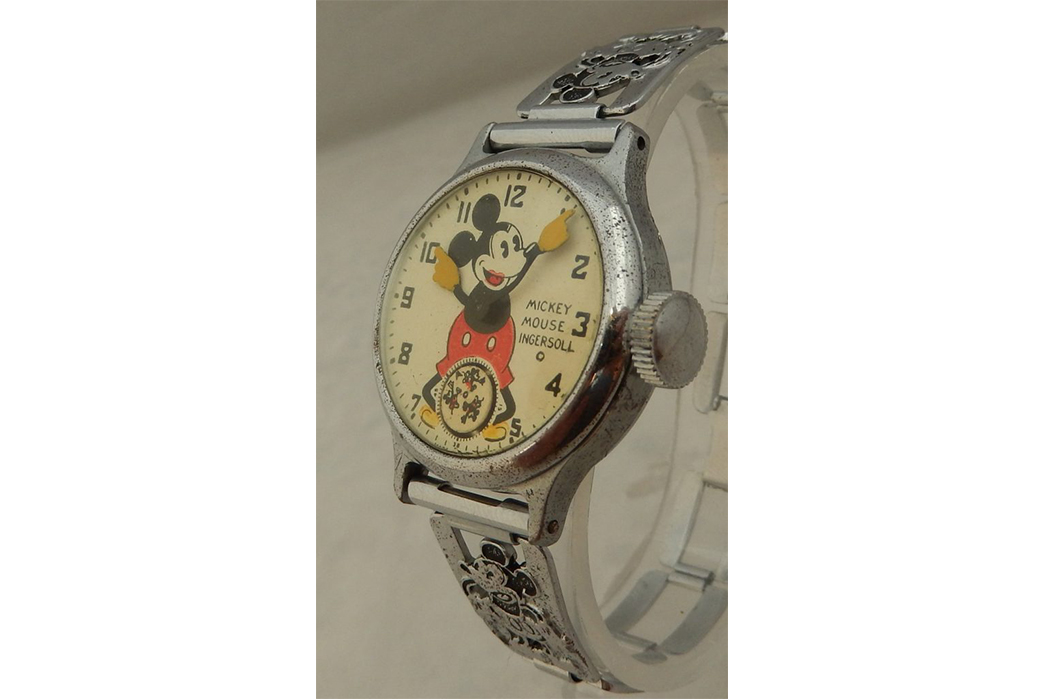
Mickey Mouse x Ingersoll. Image via Timesticking.
The Great Depression could have proved disastrous to the brands that would eventually become Timex, if not for a 1930 deal with a little company called Disney. Ever heard of it? The deal was first made public in 1933 at the Chicago World’s Fair and the Mickey Mouse watches and clocks became the company’s first-ever million-dollar line.
The Second World War would also be extremely lucrative for The United States Time Corporation as the brand became known in 1944. However; the brand wasn’t focusing on watches, but rather on precision timers for bomb fuses. But this business could last only as long as the war and when aggressions petered out during the Korean War, USTC reverted to their original business model—watch manufacturing. The company’s war research ended up benefitting their watch designs, especially the use of armalloy, a new hard alloy that could be taken from wartime missile bearings and used to replace the costly jewels traditionally used in watches.
/ In Partnership with Devium/
We’ve been waxing lyrical about waxed canvas for years, and we ain’t stopping today. Devium has dropped its Overdrive Waxed Canvas Jacket, providing us with yet another waxy, workwear-inspired piece to bring to your attention.
A true 4-season piece, the Overdrive is made from waxed canvas and lined with comfy cotton plaid. Just like every Devium garment, every fiber of this jacket is made in the USA, from the waxed canvas all the way down to the hardware and labels.
Available in 3 colorways, each variant has one thing in spades – texture. The waxed canvas has that crinkly look that we know and love, the cotton flannel has a slightly uneven weave and whimsical shadow plaid, and the heavy-duty zippers are made of antique brass that has a mottled appearance from the jump.
Get yours from Devium for $358
The Dawn of Timex
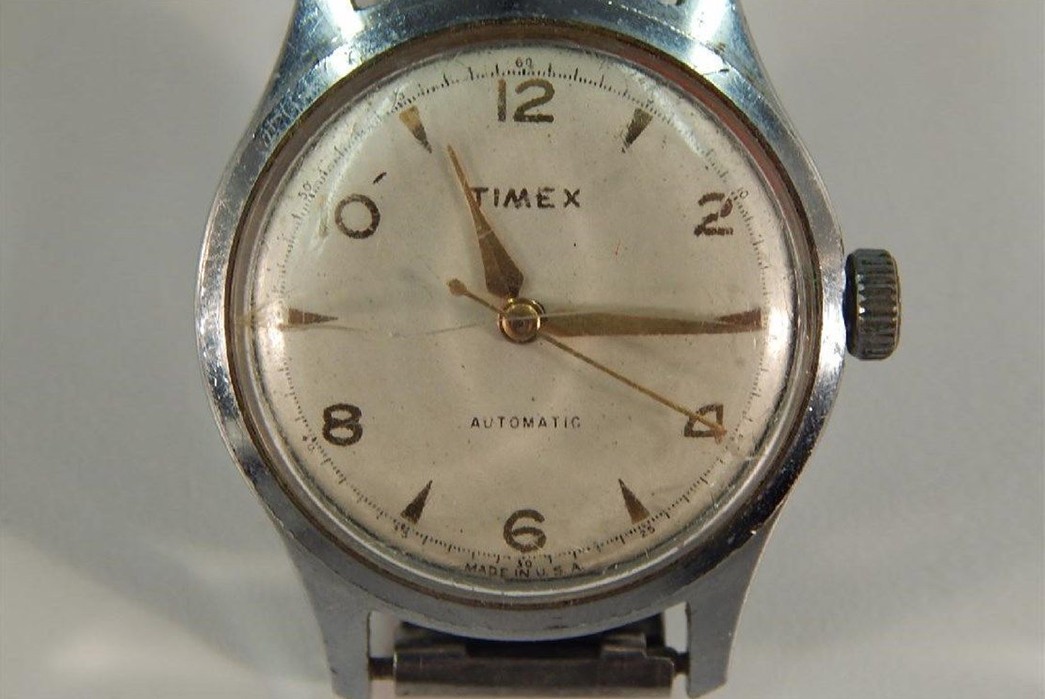
Timex. Image via Pinterest.
Though the Timex label was first used on a limited run of nurses’ watches during WWII, the first proper Timex watch appeared in 1950. The heads of the United States Time Corporation fully devoted themselves to lowering costs as much as possible. The Timex watch would be the cheapest watch on the market, thanks to clever manufacturing practices and those wartime innovations we previously mentioned.
Clever advertising helped too, and Timex became known as the “watch that takes a licking and keeps on ticking.” TV spots showed Timex watches being submitted to “torture tests,” which proved that the watches could withstand all manner of torment and keep on trucking. By the early 1960s, one in three watches sold was a Timex. The unforeseen success of this new watch led the company to change its name in 1969, and thus, the Timex Corporation came to be.
Timex Q Digital LCA Stainless Steel Watch 32.5mm – Gold Tone, available for $150 from STAG.
But Timex and the rest of the watch industry were in for a nasty shock. The so-called “Quartz Crisis” began in the early 1970s with the arrival of cheap mechanical watches from new Asian companies, which then was further exacerbated by the advent of quartz-powered digital watches from some of these new players on the scene. Timex, which had built its reputation on it sheer affordability was blown out of the water by even cheaper pieces and more reliable technologies. The company floundered and was forced to lay off thousands of employees and close plants. The Disney deal expired and Timex even launched a misguided and short-lived foray into the nascent home computer industry. Times were tough.
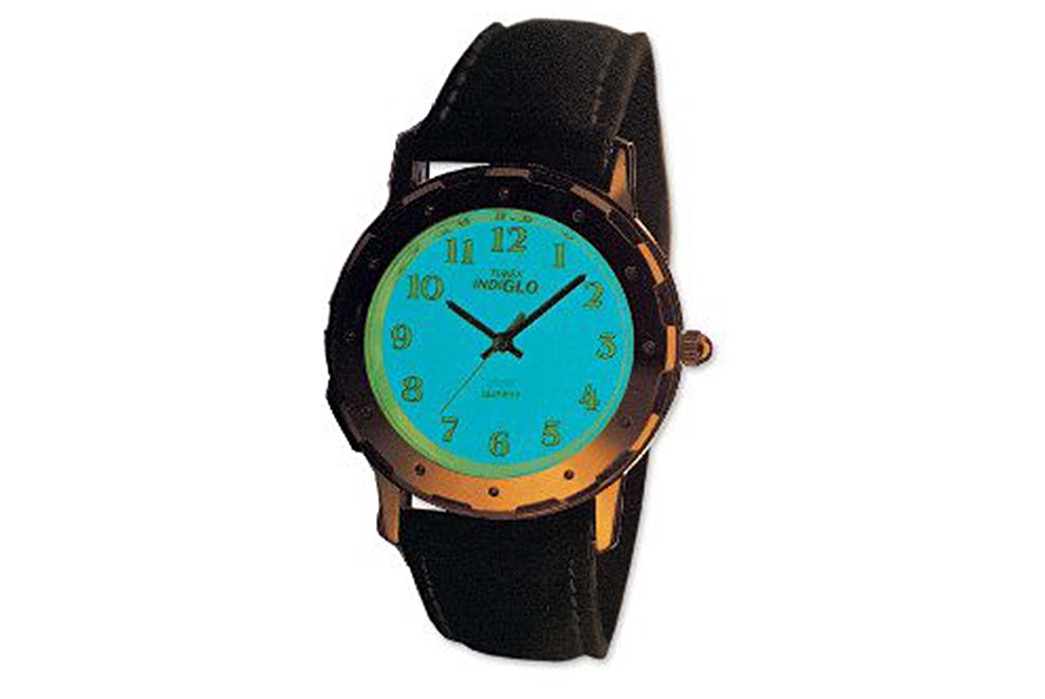
Timex Indiglo. Image via Bespoke Unit.
Things started to level out when Timex refocused on their roots: affordable timepieces. The Ironman Triathalon watch was the result of a collaboration between Timex and prominent athletes, a super-reliable and innovative sports watch that brought the company (once again) back from the brink. It was in this same period, the mid-1980s, that Timex introduced “Indiglo,” a feature that backlit the watch for extra legibility in difficult conditions. In fact, during the tragic 1993 World Trade Center bombing, an office worker used his Indiglo feature to help his colleagues navigate their way to safety down 40 flights of stairs. A literal trial by fire that proved the usefulness of this new feature.
Timex managed to roll with the punches and integrate the new technologies of the post-mechanical era to great effect. Though Timex struggled to find an identity after the Quartz Crisis, what saved them from financial oblivion was what had always been their strongest suit—cheap watches!
Timex x Worn & Worn WW75 V3 Limited Edition, available for $239 from Windup Watch Shop.
Present Day
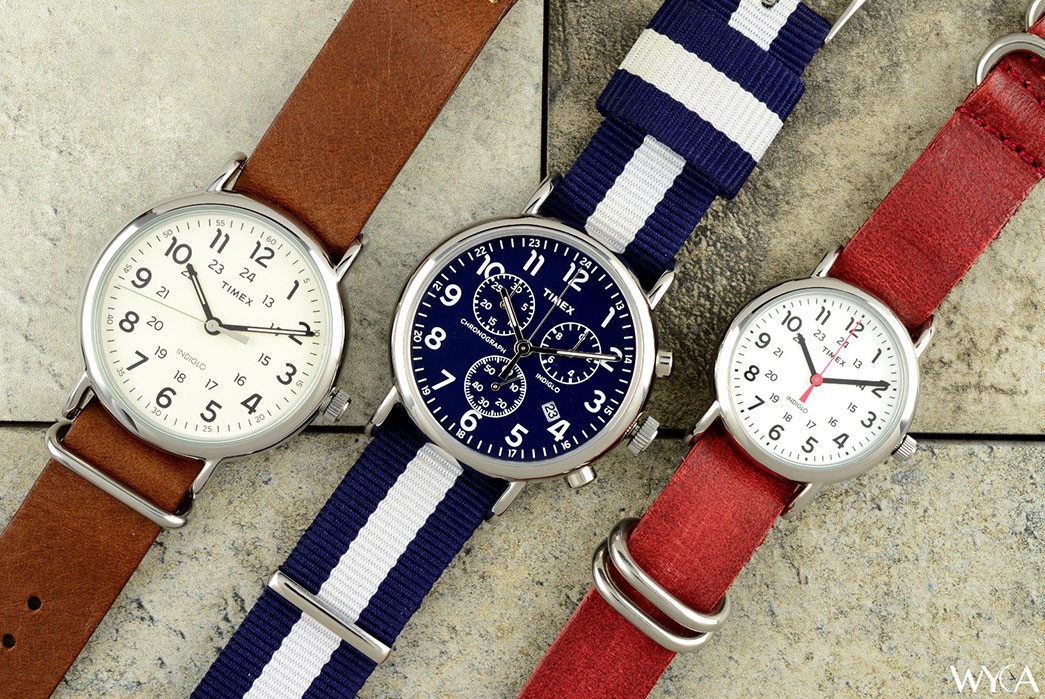
Image via Watches You Can Afford.
Timex ceased producing their mainline watches in the U.S. in 2001, though certain premium versions are still made here. Sometimes affordability means sacrifice, and the made-in-USA status had to go. The company’s headquarters are now in Middlebury Connecticut, where they relocated before they burst onto the wartime manufacturing scene in the 1940s. The brand has branched into new territory, working on heart-rate monitors and GPS devices in addition to managing a number of sub-brands under the larger Timex umbrella.
Though no longer so unimpeachably American, the one thing that has continued over the company’s various phases and rebrands is its dedication to providing the simplest, most affordable watches to everyone. Though there are clear reasons people gravitate towards luxury mechanical brands, all future watch geeks have to start somewhere. And usually, that somewhere is Timex.
Iconic Timex Models
MK1
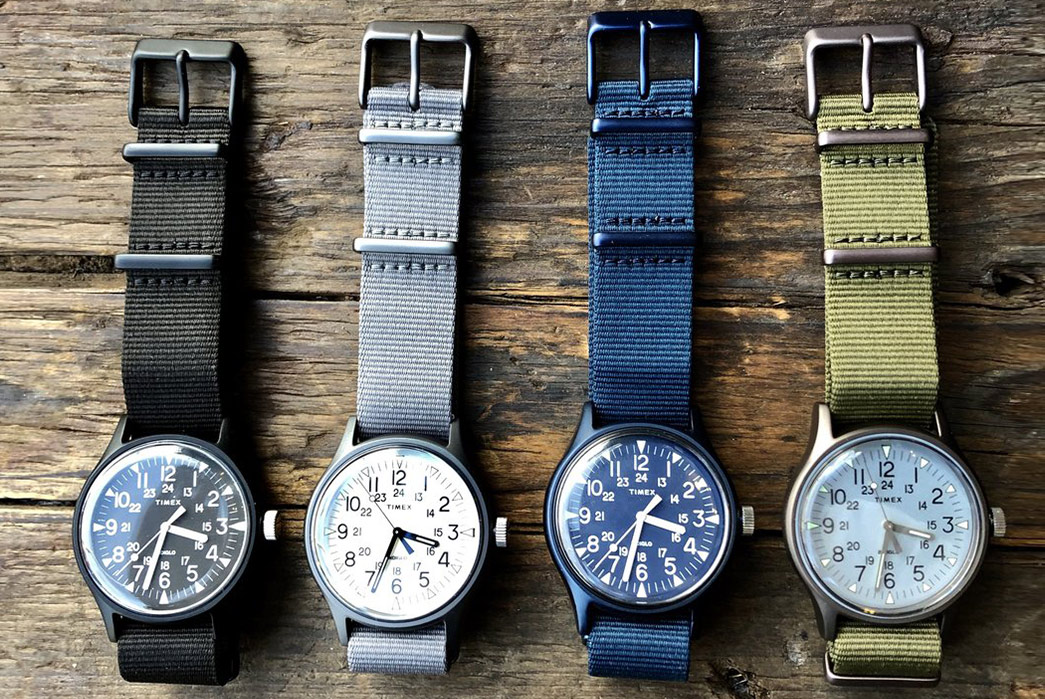
MK1 Watches on Nato straps. Image via Sault New England.
The MK1 is a re-release of the Camper watch – an easy-to-read, no-fuss quartz watch that was adopted by the US military in the 1980s for its functionality and legibility. A low-key classic with all the charm and minimalist elegance you’d expect from a once mil-spec piece, the MK1 is a great watch whether or not you consider yourself a watch enthusiast.
Timex MK1 36mm, available for $79 from Timex.
Weekender
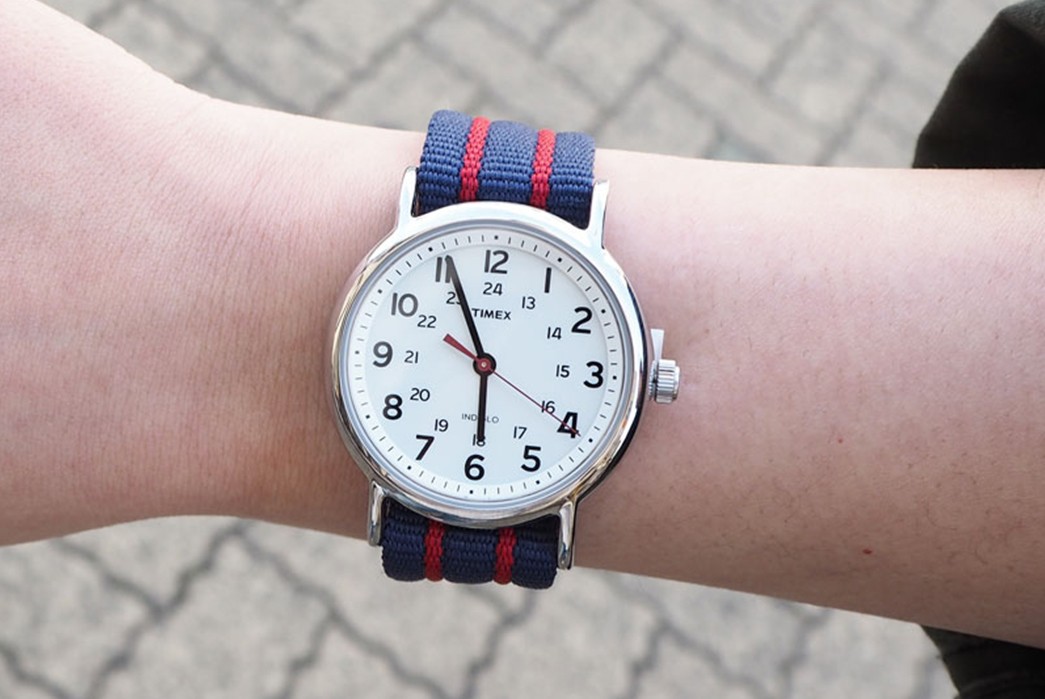
Timex Weekender. Image via Rakuten.
The Weekender is probably the watch you picture when you think of Timex. Even more stripped down than the MK1, the Weekender does all the same things, but for about a third of the price. What could be more quintessentially Timex? All the functionality, a little bit cleaner in design, and extremely affordable.
Timex Weekender 38mm, available for $54 from STAG.
Like this? Read these:
What did you think of today's newsletter? |



